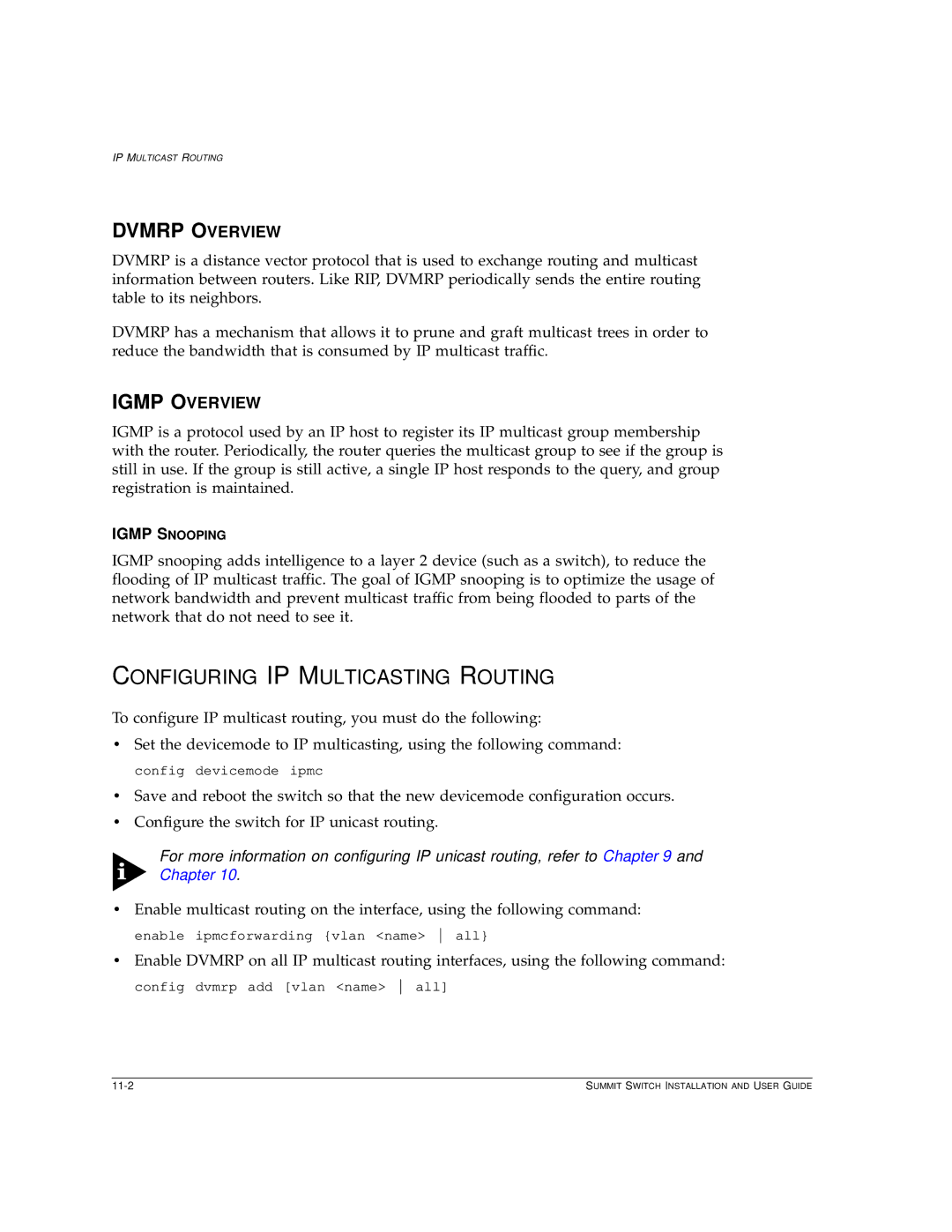
IP MULTICAST ROUTING
DVMRP OVERVIEW
DVMRP is a distance vector protocol that is used to exchange routing and multicast information between routers. Like RIP, DVMRP periodically sends the entire routing table to its neighbors.
DVMRP has a mechanism that allows it to prune and graft multicast trees in order to reduce the bandwidth that is consumed by IP multicast traffic.
IGMP OVERVIEW
IGMP is a protocol used by an IP host to register its IP multicast group membership with the router. Periodically, the router queries the multicast group to see if the group is still in use. If the group is still active, a single IP host responds to the query, and group registration is maintained.
IGMP SNOOPING
IGMP snooping adds intelligence to a layer 2 device (such as a switch), to reduce the flooding of IP multicast traffic. The goal of IGMP snooping is to optimize the usage of network bandwidth and prevent multicast traffic from being flooded to parts of the network that do not need to see it.
CONFIGURING IP MULTICASTING ROUTING
To configure IP multicast routing, you must do the following:
•Set the devicemode to IP multicasting, using the following command: config devicemode ipmc
•Save and reboot the switch so that the new devicemode configuration occurs.
•Configure the switch for IP unicast routing.
For more information on configuring IP unicast routing, refer to Chapter 9 and Chapter 10.
•Enable multicast routing on the interface, using the following command: enable ipmcforwarding {vlan <name> all}
•Enable DVMRP on all IP multicast routing interfaces, using the following command: config dvmrp add [vlan <name> all]
SUMMIT SWITCH INSTALLATION AND USER GUIDE |
